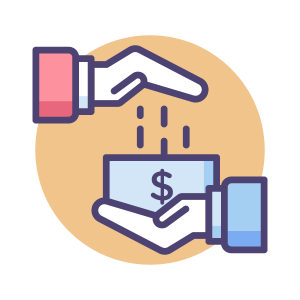Grant Management Software | Foundations and nonprofits often have similar missions, but different roles within a community. While both organizations may have individual goals, they often need to work together to achieve them. To improve the world, foundations provide funding for nonprofit projects, while nonprofit organizations use these resources to carry out their initiatives.
Despite shared missions, these two groups often face a huge disconnect in communication and the ability to easily collaborate. Many foundations probably don’t want to withhold valuable information from their constituents, but outmoded processes make it difficult for them to manage information themselves, let alone share it. With the advent of digital tools like grant management software that facilitate communication, this doesn’t have to be the case.
Nonprofits want greater transparency grant management software
A poll conducted by the Center for Effective Philanthropy cited by The Chronicle of Philanthropy found that an overwhelming majority of nonprofits want greater visibility, not only into the grant decision-making process but also what worked out and what didn’t. Some interesting statistics:
- Twenty-nine (29) percent of respondents felt they understand how foundations use the information they supplied in their proposals.
- Eighty (80) percent of respondents want to hear more from foundations about what went into their decision-making process.
- Seventy-five (75) percent of respondents reported wishing to know about internal changes within a foundation that may affect future funding.
- Ninety (90) percent of nonprofits want greater insight into funding decisions that don’t go as planned.
- Seventy seven (77) percent want to hear more about foundation success stories.
While foundations may feel they are being clear in their directions, they may not be communicating their funding goals and requirements as well as they could be. Beginning with a better understanding of what your nonprofits want is a great first step.
Benefits of open communication
When applicants have a better idea of what kinds of projects a foundation typically funds, they are more likely to submit proposals to the right foundations. This better understanding and more efficient proposal submission save a great deal of time money and energy on both ends. It ensures that nonprofits don’t work on and submit proposals that aren’t relevant to them and that foundations receive appropriate proposals to fulfill their purpose and contract.
Transparency not only allows foundations to better achieve their own goals, but it can help them form more effective partnerships with grantees, applicants, and partners, according to Grant Craft’s “Opening Up: Demystifying Funder Transparency.”
Available platforms like grant management software make it easy for foundations to gather proposals, process their reviews and report on their grantmaking process. Rather than maintaining grantee information in spreadsheets and databases, grant management software keeps all the important details under one roof.
Join together
In addition to implementing more sophisticated software, there are other steps foundations can take. Foundations can also join networks where they can learn from one another about best practices and strategies for sharing data.
With more effective tools, philanthropists can work together to create greater transparency and improve the funding process for everyone involved.












